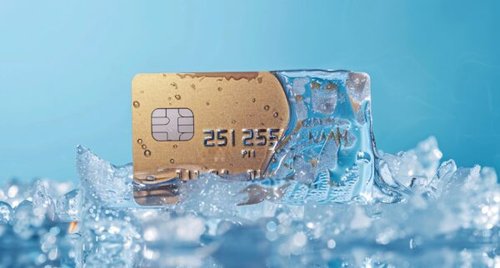I was recently prompted to use a credit card that had fallen to the wayside. If I didn’t use the card within the next month, my account would be deemed inactive and close.
It was the first card I had ever opened, and the last thing I wanted to do was lose that credit history. Panicked, I rummaged through my belongings, only for the card not to turn up. As I waited for a replacement card to arrive in the mail, I browsed the credit card issuer’s website and realized that it had been 20 years since I’d hunted for a new card from that issuer.
After some research, I found a card that offered 3% flat cash back on a spending category of my choice. Did I need another card? Probably not. But a generous sign-up bonus reeled me in, and I applied nonetheless.
Before I could formally submit my application, however, I had to lift a longstanding credit freeze. That way, creditors and lenders could access my credit file, which plays a major role in determining whether they want to extend a credit line or loan to me.
WHAT IS A CREDIT FREEZE?
A credit freeze is a free feature offered by each of the three main credit bureaus – Equifax, Experian, and TransUnion – which restricts access to your credit report so you, or others, won’t be able to open a new credit account while the freeze is in place. You can temporarily lift a freeze if you need to apply for new credit.
As it’s been many moons since the last time I needed to unfreeze my credit, I learned a few things along the way:
1. Credit freezes and credit locks aren’t the same
While credit freezes and credit locks both restrict what parties can access in your credit report, they are slightly different. For one, each of the three major credit bureaus — Equifax, Experian and TransUnion — offer credit freezes, also known as security freezes, for free.
do you have to freeze credit with all three bureaus?
Yes, when creating a credit freeze you must make separate requests with each of the three main credit bureaus in order to create a thorough freeze on your report.
Credit locks, on the other hand, are usually available as an add-on feature for a paid service — such as a credit monitoring app. To activate or deactivate a credit lock, you simply make a few clicks on the credit monitoring service’s mobile app or website. It’s a little trickier however, to lift, or “thaw,” a credit freeze.
2. You have to lift a freeze with each credit bureau
To fully lift a credit freeze you’ll need to submit a request with each of the three credit bureaus. Unfortunately, there are no shortcuts, but the good news is that the process is straightforward. Most people choose to thaw their freeze online, via each bureaus’ website.
Once you request to lift your freeze, you’re given the following options:
A permanent or temporary lift. The initial reason why I placed a freeze on my credit about a decade ago was because I suspected I was a victim of identity theft. To safeguard my information and help make sure no one was applying for credit under my name and getting it approved without my knowledge, I put a freeze on my report.
I only needed to lift my freeze temporarily so I could submit a new credit card application. If I did a permanent lift on my credit freeze, I would have had to set a new freeze down the line.
A time frame for the lift. Since I was only temporarily lifting my credit freeze, I could pick a time frame that it would stay lifted. Thawing my credit freeze could be as short as a single day, or for a month or longer.
HOW MUCH DOES IT COST TO UNFREEZE YOUR CREDIT?
Freezing and unfreezing your credit is a free service offered by each of the three main credit bureaus.
3. The thaw happens almost immediately
If you request a lift online or by phone, you can thaw your credit within the hour, if not immediately. However, if you request a freeze in writing — maybe you’re not keen on creating an online account — you’ll need to wait up to three business days from the time the letter is received for your freeze to begin.
If you’re requesting the freeze via snail mail, you’ll typically need to include the following information:
- Name
- Date of birth
- Mailing address
- Social Security number
- Copy of government-issued ID (i.e., driver’s license, state ID card)
If you’re requesting the freeze via phone, here’s what you’ll need to provide:
- Name
- Date of birth
- Mailing address
- Social Security number
4. You can schedule a credit thaw ahead of time
As I knew I would be applying for just one credit card, I didn’t find it necessary to schedule a thaw ahead of time. Going forward, if I was shopping around for a mortgage, car loan or personal loan, and anticipated hard pulls on my credit, then I would certainly schedule a temporary lift. For instance, TransUnion lets you schedule a thaw up to 15 days in advance.
5. A credit freeze or thaw won’t affect your credit score
This is something that gets commonly mixed up, but anything that has to do with a credit freeze — a thaw, permanent unfreeze, or new freeze — won’t impact your score. What does impact your score is when you get prequalified or apply for a credit card or loan.
That’s because in order to get prequalified or approved, the lender will need to do a hard pull on your credit, which can negatively impact your credit score. While hard pulls normally stay on your credit report for two years, they don’t typically ding your credit much. That said, if your credit is already in good shape, this isn’t really anything to worry about.
All in all, lifting my credit freeze to apply for a credit card was a fairly straightforward process. Knowing the steps involved and what it entails will make it easier for me to request a lift for the next go round.


